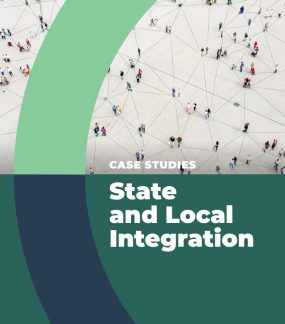State and Local Integration
How can state and local integration work to reduce drug overdose?
The drug overdose epidemic in the United States remains a critical public health issue.1 The overdose epidemic indicates the need for a comprehensive public health approach enacted through state and local integration and coordination. State and local health departments are uniquely positioned to lead the response as they have the authority to enact policies, deploy programs and resources, and convene partners across multiple sectors to coordinate response efforts. By engaging local health departments, community organizations, coalitions, and community members with state overdose prevention efforts, state and local integration capitalizes on the important and distinct prevention roles of state and local partners. The case studies presented here illustrate what successfully implemented state and local integration looks like. When states and localities work together, they build capacity for cohesive, unified, and collective responses to overdose prevention.2
Many strategies and interventions may support state and local integration of overdose prevention activities. For example, localities and states can unify their prevention messaging, which may help increase awareness and decrease stigma by ensuring that residents receive consistent information about overdose prevention. Data sharing allows state and local organizations to contextualize, understand, and coordinate prevention needs across localities, allowing coordinated use of resources, strategies, and interventions to reach those most in need.3 Coalitions may also support state and local integration by facilitating collaboration between partners from different sectors to design and implement comprehensive and complementary overdose prevention efforts.4,5
Case Study Snapshots
- The Rhode Island Department of Health (RIDOH) holds weekly Surveillance Response Intervention (SRI) calls where information about overdose hot spots is communicated with state agencies and local partners to rapidly respond with integrated efforts to effectively use and disseminate data.
- The SRI produces weekly reports using 48-Hour Opioid Overdose Reporting System data from hospitals that help identify patient demographics and overdose geographic clusters in near real-time. A public health advisory is disseminated via email if a community exceeds its predetermined overdose threshold. The advisory includes an alert about an increase in overdoses and key community messages and may include a heat map of opioid overdose-related emergency medical services (EMS) calls.
- Partners who receive the advisory include substance use treatment providers, recovery centers, harm reduction organizations, Emergency Medical Systems, first responders (fire/EMS, law enforcement), emergency department (ED) staff, pharmacists, prescribers of medication for opioid use disorder (MOUD), faith leaders, regional prevention coalitions, Rhode Island Health Equity Zone (HEZ) leaders, and community advocates.
- The alerts activate mobile outreach teams to hot spots where they visit shelters, food banks, and grocery store parking lots and conduct outreach to local businesses with resources. The teams also distribute print resources in high pedestrian areas within hot spots (e.g., casino bathrooms, bodegas, laundromats).
- In 2017, the California Department of Public Health (CDPH) initiated the Overdose Prevention Initiative to prevent lives lost from overdose by funding coalitions statewide to address current and emerging community needs.
- California’s coalitions emerged from the action and foresight of a dedicated doctor at the California Health Care Foundation (CHCF), who became a steadfast advocate for overdose prevention after seeing the negative impact of the opioid crisis among her patients. She proposed funding coalitions as a community engagement strategy used by other states engaged in overdose prevention.6
- Coalitions are housed in local health departments and nonprofit organizations, such as health collaboratives and county medical societies, and use data to inform community actions and to implement evidence-based interventions.
- Local staff and 40 AmeriCorps Volunteers in Service to America (VISTA) within served counties coordinate with the coalitions with the assistance of four dedicated CDPH project officers. The CDPH also convenes the Statewide Overdose Safety (SOS) Workgroup, which also helps to guide their network of coalitions.
- Coalition funding includes data to action as a required strategy. All funded coalitions use data to inform their programs and to promote program and policy change.
- The California Overdose Surveillance Dashboarda provides data on opioid prescribing, overdose deaths, emergency room visits, and hospitalizations by region, substance, and demographics. These data are used to prevent overdose by tracking the epidemic to identify and inform intervention needs.
For more information about Rhode Island’s Surveillance Response Intervention Calls and California’s Coalitions, check out the full case study here [PDF – 17 pages].


